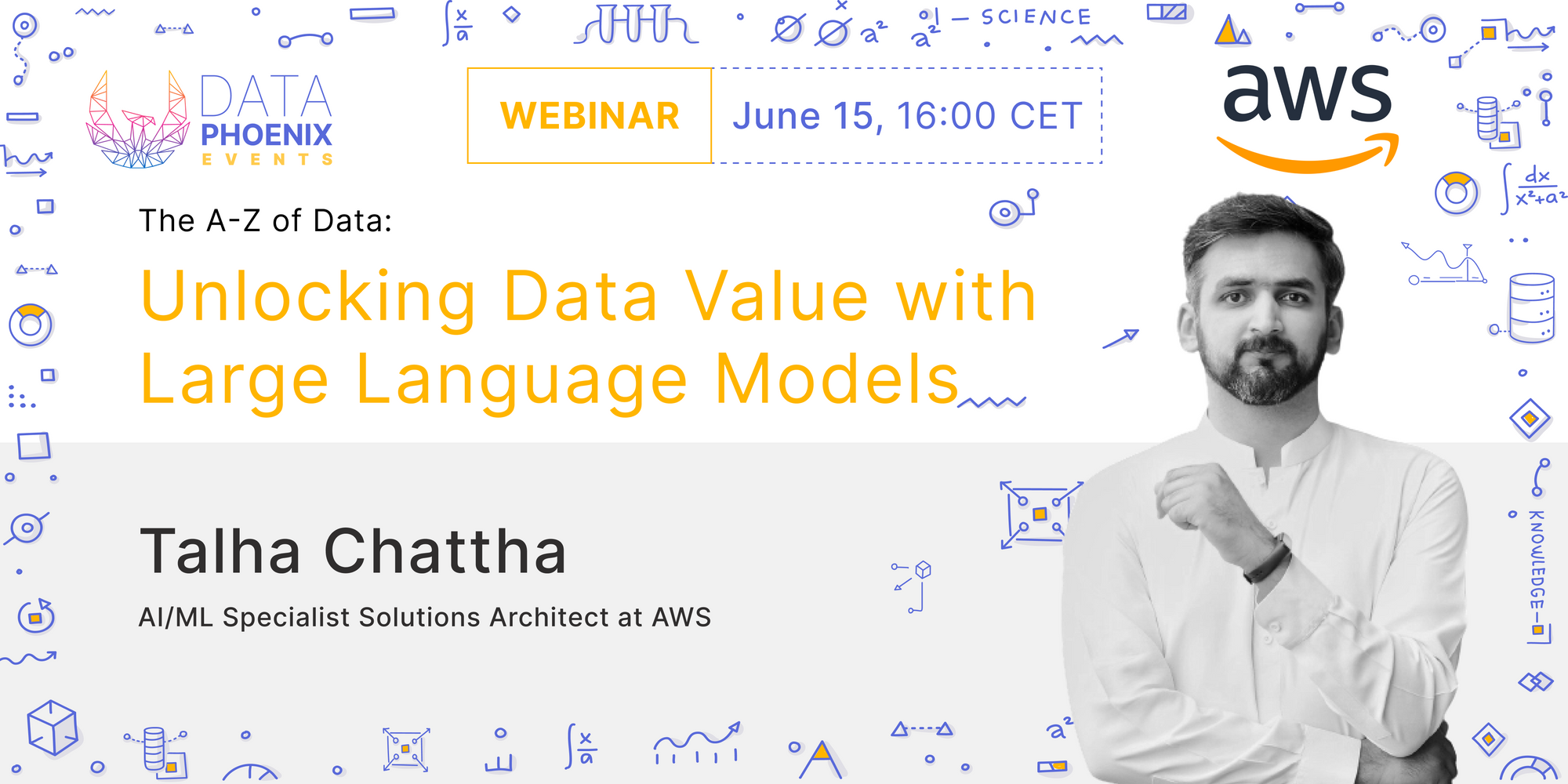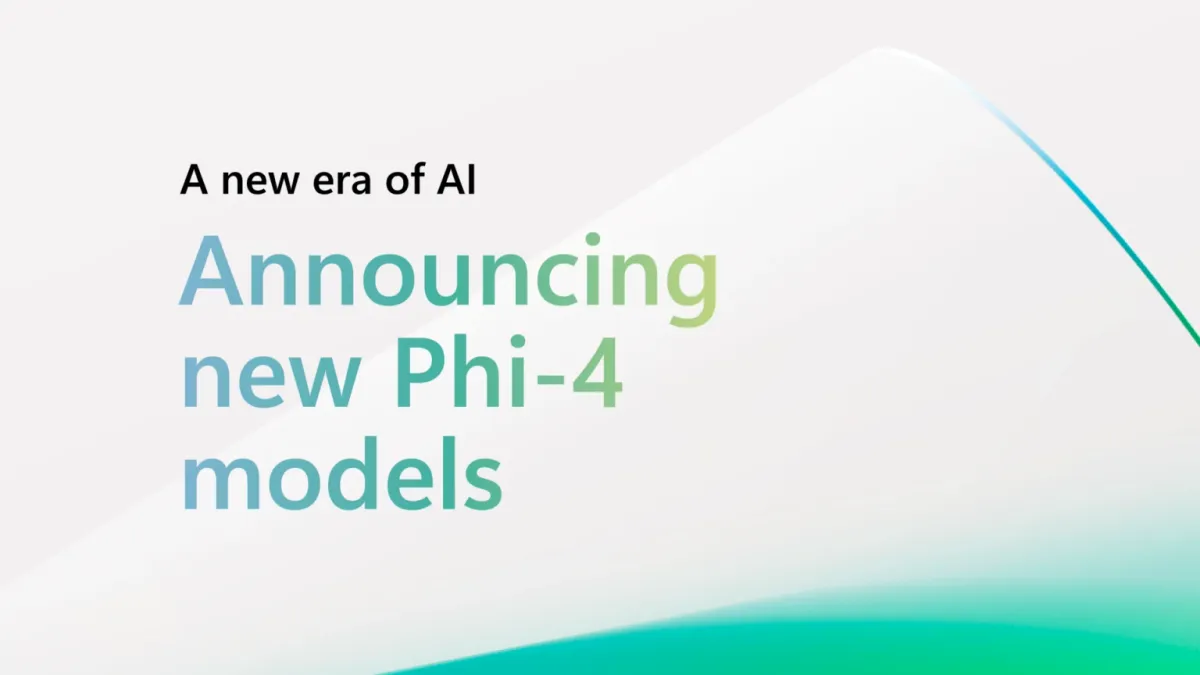Hey folks,
Welcome to this week's edition of Data Phoenix Digest! This newsletter keeps you up-to-date on the news in our community and summarizes the top research papers, articles, and news, to keep you track of trends in the Data & AI world!
Be active in our community and join our Slack to discuss the latest news of our community, top research papers, articles, events, jobs, and more...
Data Phoenix community news
Upcoming webinars:

- Unlocking Data Value with Large Language Models / June 15
- Reducing NLP Inference costs through model specialisation / June 22
Video records of past events:
- Webinar "Why you should move to a Lakehouse"
- Webinar "Learning through machine learning: how we built a recommendation system from scratch"
Summary of the top articles, papers, and courses
Articles
Introducing an image-to-speech Generative AI application using Amazon SageMaker and Hugging Face
Describe for Me is a website which helps the visually impaired understand images through image caption, facial recognition, and text-to-speech, a technology we refer to as “Image to Speech.” in this blog post will walk you through the Solution Architecture behind “Describe For Me”, and the design considerations of the solution.
How to Evaluate the Performance of Your ML/ AI Models
This article explores how you can evaluate your AI or ML model. Regardless of the type of model you have and your end application, you will learn how to improve its performance by using the Wine dataset from sklearn, applying the support vector classifier (SVC), and then testing the model’s metrics. Check it out!
How to Build an End-To-End ML Pipeline
End-to-end machine learning pipelines can help engineers save lots of their precious time and resources, and allow them to focus more on deploying new models than maintaining existing ones. In this article, you will learn how to quickly build and deploy an end-to-end ML pipeline with Kubeflow Pipelines on AWS.
Using Activation Functions in Deep Learning Models
In PyTorch, there are many activation functions available for use in your deep learning models. In this post, you will see how the choice of activation functions can impact the model. Take a deep dive into how activation functions work and how to use them.
Monitoring Your Time Series Model in Comet
This tutorial goes through steps on how to use Comet to monitor a time-series forecasting model. The author explains how to carry out some EDA on the dataset, and then log the visualizations onto the Comet experimentation website or platform.
Papers & projects
Drag Your GAN: Interactive Point-based Manipulation on the Generative Image Manifold
This paper explores a new way of controlling GANs that includes "dragging" any points of the image to reach target points in a user-interactive manner - DragGAN. It can help to deform an image with precise control over where pixels go, thus manipulating the pose, shape, expression, and layout of diverse categories.
Structural Pruning for Diffusion Models
Diff-Pruning is a compression method tailored for learning lightweight diffusion models from pre-existing ones, without extensive re-training. The essence of Diff-Pruning is encapsulated in a Taylor expansion over pruned timesteps, a process that disregards non-contributory diffusion steps and ensembles informative gradients to identify important weights.
BloombergGPT: A Large Language Model for Finance
BloombergGPT is a 50 billion parameter language model that is trained on a wide range of financial data. It is validated on standard LLM benchmarks, open financial benchmarks, and a suite of internal benchmarks that most accurately reflect our intended usage.
HuaTuo: Tuning LLaMA Model with Chinese Medical Knowledge
HuaTuo is a LLaMA-based model that has been supervised-fine-tuned with generated Q&A instances. The experimental results demonstrate that HuaTuo generates responses that possess more reliable medical knowledge.
Segment Anything Model (SAM): a new AI model from Meta AI that can "cut out" any object, in any image, with a single click
SAM is a promptable segmentation system with zero-shot generalization to unfamiliar objects and images, without the need for additional training. The model was trained on Meta AI’s SA-1B dataset for 3-5 days on 256 A100 GPUs. Make sure that you try it!
Courses
Reproducible Deep Learning: PhD Course in Data Science
Building a DL model is a complex task. The aim of this course is to start from a simple DL model implemented in a notebook, and port it to a ‘reproducible’ world by including code versioning, data versioning, experiment logging, hyper-parameter tuning, etc.
Responsible AI Course by Machine Learning University
This course is designed to introduce you to several dimensions of Responsible AI with a focus on fairness criteria and bias mitigation. In 30 short videos, you will learn about different fairness criteria, bias measurements, and bias mitigation techniques.






Comments